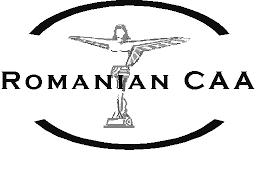A. General information
(1) The "symbolic flame" (e.g.: olympic flame, peace flame, Easter flame, holy light, etc.) consists of a lamp fueled with " Kerosene " - UN1223 or " Hydrocarbons, liquid, n.o.s." – UN3295.
(2) In accordance with the provisions of ICAO Technical Instructions Doc 9284, the "symbolic flame" can be carried as carry-on luggage by a passenger, only with the operator's accept and under the conditions of meeting the provisions of special provisions A 324.
(3) At the request of a passenger, an air operator may accept to carry as "hand luggage" on board of an aircraft, the "symbolic flame" consisting of a maximum of 4 "Davy" lamps, or similar equipment, if it applies for, and receives special approval in this meaning both from the competent authority of the "state of origin" and from the competent authority of the operator's state.
"State of origin" – The State in whose territory the shipment is to be first loaded onto an aircraft.
"State of the operator" - The State in which the principal place of business of the operator is located or, if there is no such place of activity, the permanent residence of the operator. The state of the operator is established in accordance with the provisions of the European Regulation (EU) 965/2012, or with the national legislation of non-EU states.
If the country of origin or the country of the air operator is Romania, approval must be obtained from the Romanian Civil Aviation Authority (RO-CAA).
B. Special approval from RO-CAA
(1) In order to obtain the special approval, the operator must send an application for the granting of the special approval at registratura@caa.ro , at least 10 working days before the expected date of the flight.
(2) The application for approval shall contain the following:
(a) the name of the air operator;
(b) the names of the crew members, including the reserve;
The crew will be composed of the operational crew (flight crew and cabin crew – if applicable) and the person designated by the operator, without operational duties on board (including designated reserve persons), to supervise the lamp during the flight;
(If several lamps are involved, several accompanying persons may be designated, in which case the number of lamps under the care of each responsible person will be specified);
(c) the type and registration of the aircraft (including the reserve aircraft) with which the flight is intended;
(d) flight schedule and route;
(e) the UN code and proper shipping name of the fuel used for the lamps;
(f) the type of lamps used;
(g) the exact number of lamps on board and their location;
(h) the type of fuel used (proper shipping name and UN code);
(3) The application will be accompanied by the following supporting documentation:
(a) the authorization, as the case may be, of the state of origin for Romanian operators or of the operator's state (for foreign operators for whom the symbolic flame is loaded on board for the first time at an airport in Romania), for which separate authorization was requested;
(b) if Davy-type lamps are not used, documents certifying that the device used is similar shall be attached;
(c) risk assessment by the operator;
(d) in-flight emergency procedures, reporting procedures and any other procedures that will be the basis for carrying out the activities related to the transport in question;
(e) proof of carrying out the necessary additional training, according to the specific procedures of this operation, for operational crew members and persons accompanying the lamps, other personnel involved, provided for in the procedures, deemed necessary by the operator, etc.);
(f) depending on the specific situation of the transport, as declared by the air operator, RO-CAA reserves the right to request additional documentation in order to clarify certain details.
(4) Within 4 working days from the date of receipt of all documentation, RO-CAA will communicate to the air operator the approval of the transport in question or its rejection letter.
C. Special transport conditions:
(1) the lamps may not contain more fuel than is adequate for the duration of the flight;
(2) the fuel must be contained in a sealed tank;
(3) the lamps must be properly secured, in an upright position, without being able to move in any direction, in a non-flammable device;
(4) on board the aircraft, the lamps must be under the permanent supervision of an accompanying person, who must not be a member of the operating crew;
(5) the lamps may be lit by the accompanying person, but must not be refilled on board the aircraft;
(6) at least one fire extinguisher must be kept within reach of the accompanying person at all times. Accompanying persons must be trained in the use of the fire extinguisher;
(7) the aircraft crew must be given a verbal briefing about the carriage of the lamps and the pilot-in-command must be provided with a copy of the approval.
